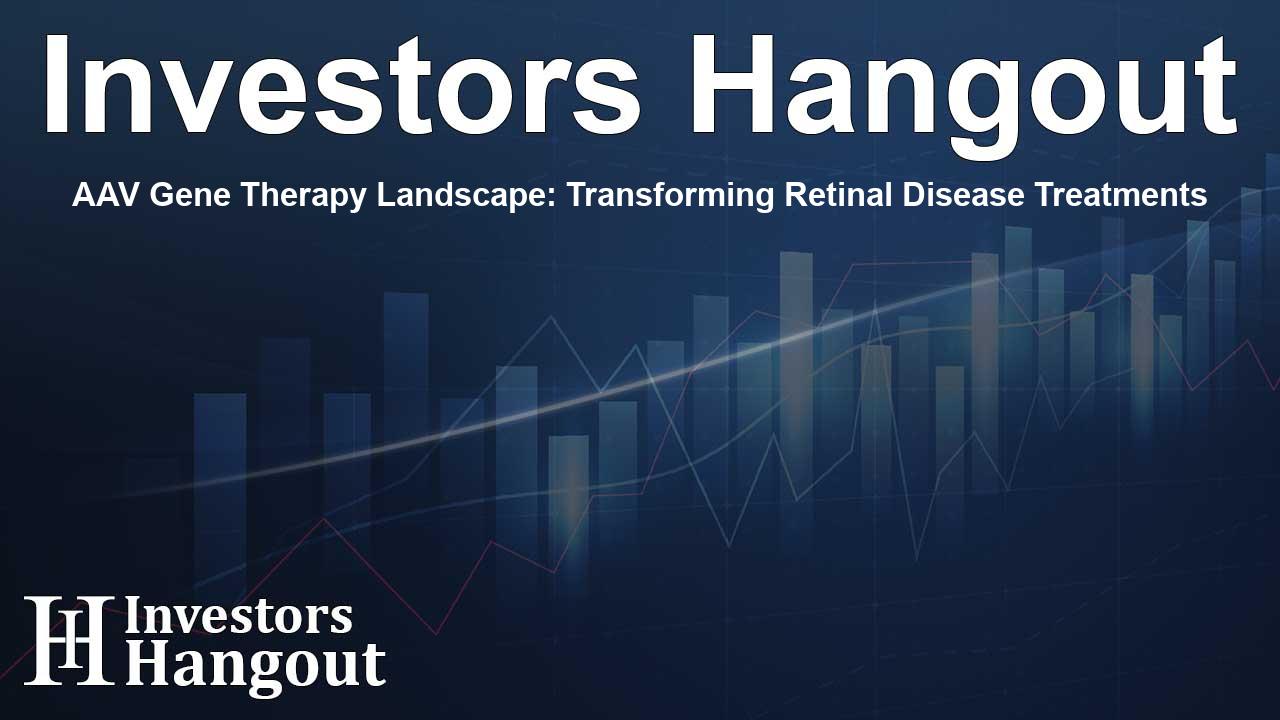AAV Gene Therapy Landscape: Transforming Retinal Disease Treatments

Introducing the AAV Gene Therapy for Retinal Diseases
Adeno-associated virus (AAV) has emerged as an essential tool in the realm of gene therapy, particularly for treating hereditary retinal diseases caused by mutations in critical genes such as RPE65, CEP290, and CHM. This gene therapy approach is designed to address unmet medical needs, offering hope for long-term or potentially permanent vision restoration for those affected by these conditions.
Understanding the Landscape of AAV for Retinal Diseases
With over 70 active companies in this competitive space, the AAV gene therapy market is experiencing rapid growth and innovation. Reports indicate that more than 75 drugs are currently in various stages of clinical development aimed at treating hereditary retinal diseases. This significant pipeline showcases a vibrant ecosystem where companies like Novartis, MeiraGTx Limited, Johnson & Johnson, and Neurophth Therapeutics are innovating and competing to bring forward new therapies.
Key Players and Their Contributions
Prominent companies are continually evaluating innovative AAV therapies designed to enhance the treatment landscape for hereditary retinal diseases. For example, drugs such as Botaretigene sparoparvovec, NFS-01, and AGTC-501 are under various phases of clinical trials and show considerable promise.
The Mechanism and Promise of AAV Gene Therapy
AAV serves as a vector to deliver functional copies of defective genes directly into the retinal cells, a vital mechanism in managing conditions like retinitis pigmentosa and Stargardt disease. The advantage of AAV lies in its low immune response, which allows for effective treatment with reduced risks associated with immediate immune activation. By facilitating long-lasting gene expression with just a single administration, AAV-based therapies not only aim to restore function but also enhance overall patient quality of life.
Future Directions in AAV Gene Therapy
As advancements in technology continue to unfold, researchers are poised to integrate genetic editing tools such as CRISPR/Cas9 into AAV applications. This innovation could lead to more precise correction of mutations, expanding treatment options further. Additionally, exploring new delivery methods, such as dual-vector systems, is critical in addressing the AAV’s limited cargo space to accommodate larger genes related to these disorders.
Market Dynamics and Growth Potential
The AAV gene therapy market is driven by several factors, including successful precedents like LUXTURNA, which has paved the way for future therapies. However, challenges such as AAV's limited cargo capacity, complex manufacturing, and regulatory hurdles persist. The ultra-orphan status of many hereditary retinal diseases creates unique challenges in pricing and reimbursement strategies, making it crucial for companies to strategize effectively for market penetration.
Collaborative Efforts and Innovations
Collaborations between biotech firms and larger pharmaceutical companies are becoming increasingly common, enabling shared resources and expertise. Firms like MeiraGTx are leveraging new AAV serotype engineering to diversify their therapeutic applications, thereby broadening access to larger patient populations.
Emerging Developments in AAV Therapies
The dynamic nature of AAV therapies is marked by several key developments. For instance, recent FDA designations and advancements in clinical trials are set to enhance market accessibility and therapeutic effectiveness. Ocugen’s OCU410ST and Atsena Therapeutics' ATSN-201 are notable examples of therapies granted designations that facilitate their development into accessible treatments.
Challenges and Considerations Ahead
Even with promising advancements, several challenges lie ahead. Issues related to long-term safety, effective delivery methods, and patient eligibility are critical hurdles that developers must navigate to ensure the success of AAV therapies in the clinical setting.
Conclusion: The Transformative Potential of AAV Gene Therapy
AAV-based gene therapy represents a significant leap forward in the treatment of hereditary retinal diseases. As the pipeline grows and technology advances, there is an optimistic outlook for restoring vision and improving lives. The continued collaboration among key players in the industry will play a pivotal role in transforming the treatment landscape and offering hope to patients.
Frequently Asked Questions
What is AAV gene therapy?
AAV gene therapy involves using an adeno-associated virus to deliver functional genes into retinal cells, aiming to correct genetic defects causing vision loss.
Why is AAV used for retinal diseases?
AAV is preferred for retinal gene therapy due to its low immunogenicity and ability to transduce non-dividing cells, helping to restore function more effectively.
Which companies are leading in AAV development?
Key players include Novartis, MeiraGTx, Johnson & Johnson, and Neurophth Therapeutics, focusing on innovative therapies for hereditary retinal diseases.
What challenges does AAV gene therapy face?
Challenges include limited cargo capacity for larger genes, potential immune responses, and complexities in manufacturing and delivery methods.
What are the future prospects for AAV therapies?
The future of AAV therapies looks promising with advancements in technology, including gene editing and enhanced delivery systems, potentially broadening their applications.
About The Author
Contact Ryan Hughes privately here. Or send an email with ATTN: Ryan Hughes as the subject to contact@investorshangout.com.
About Investors Hangout
Investors Hangout is a leading online stock forum for financial discussion and learning, offering a wide range of free tools and resources. It draws in traders of all levels, who exchange market knowledge, investigate trading tactics, and keep an eye on industry developments in real time. Featuring financial articles, stock message boards, quotes, charts, company profiles, and live news updates. Through cooperative learning and a wealth of informational resources, it helps users from novices creating their first portfolios to experts honing their techniques. Join Investors Hangout today: https://investorshangout.com/
The content of this article is based on factual, publicly available information and does not represent legal, financial, or investment advice. Investors Hangout does not offer financial advice, and the author is not a licensed financial advisor. Consult a qualified advisor before making any financial or investment decisions based on this article. This article should not be considered advice to purchase, sell, or hold any securities or other investments. If any of the material provided here is inaccurate, please contact us for corrections.
